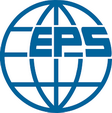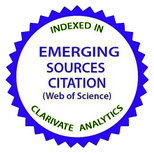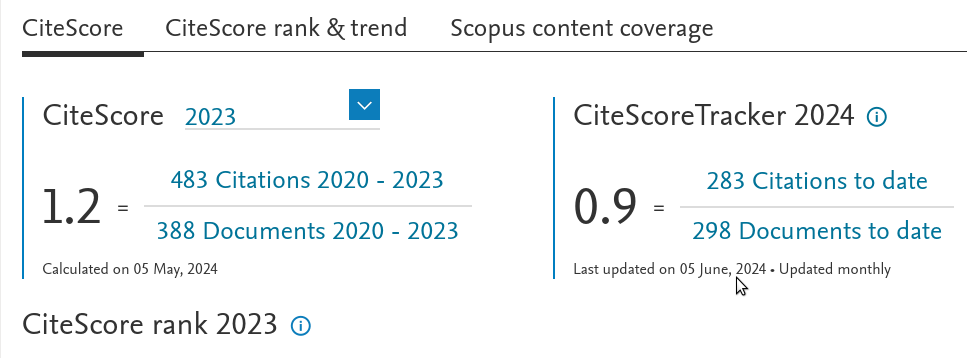Overview of ATLAS Forward Proton Detectors: Status, Performance and New Physics Results
DOI:
https://doi.org/10.15407/ujpe70.2.71Keywords:
ATLAS forward proton detectors, AFP, ALFAAbstract
A key focus of the physics program at the LHC is the study of head-on proton-proton collisions. However, an important class of physics can be studied for cases where the protons narrowly miss one another and remain intact. In such cases, the electromagnetic fields surrounding the protons can interact producing high-energy photon-photon collisions. Alternatively, interactions mediated by the strong force can also result in intact forward scattered protons, providing probes of quantum chromodynamics (QCD). In order to aid identification and provide unique information about these rare interactions, the instrumentation to detect and measure protons scattered through very small angles is installed in the beam pipe far downstream of the interaction point. We describe the ATLAS Forward Proton ‘Roman Pot’ detectors (AFP and ALFA), their performance of Tracking and Time-of-Flight detectors, and first results.
References
1. ATLAS Collaboration. The ATLAS Experiment at the CERN Large Hadron Collider. JINST 3, S08003 (2008).
2. ATLAS Collaboration. Measurement of the total cross section and -parameter from elastic scattering in pp collisions at √s = 13 TeV with the ATLAS detector. Eur. Phys. J. C 83 (5), 441 (2023).
3. ATLAS Collaboration. Measurement of exclusive pion pair production in proton-proton collisions at √s = 7 TeV with the ATLAS detector. Eur. Phys. J. C 83 (7), 627 (2023).
4. ATLAS Collaboration. Public ATLAS luminosity results for Run-3 of the LHC. https://twiki.cern.ch/twiki/bin/view/AtlasPublic/LuminosityPublicResultsRun3.
5. ATLAS Collaboration. Public forward detector plots for collision data. https://twiki.cern.ch/twiki/bin/view/AtlasPublic/ForwardDetPublicResults.
6. ATLAS Collaboration. Performance of the ATLAS forward proton Time-of-Flight detector in Run 2. JINST 19 (05), P05054 (2024).
7. ATLAS Collaboration. Observation and measurement of forward proton scattering in association with lepton pairs produced via the photon fusion mechanism at ATLAS. Phys. Rev. Lett. 125 (26), 261801 (2020).
8. ATLAS Collaboration. Search for an axion-like particle with forward proton scattering in association with photon pairs at ATLAS. JHEP 07, 234 (2023).
9. ATLAS Collaboration. Measurement of the total cross section from elastic scattering in pp collisions at √s = 7 TeV with the ATLAS detector. Nucl. Phys. B 889, 486 (2014).
10. ATLAS Collaboration. Measurement of the total section from elastic scattering in pp collisions at √s = 8 TeV with the ATLAS detector. Phys. Lett. B 761, 158 (2016).
11. ATLAS Collaboration. Measurement of differential cross sections for single diffractive dissociation in √s = 8 TeV pp collisions using the ATLAS ALFA spectrometer. JHEP 02, 42 (2020).
12. ATLAS Collaboration. Proton tagging with the one arm AFP detector. ATL-PHYS-PUB-2017-012 (2017).
13. ATLAS Collaboration. Performance of the ATLAS forward proton Time-of-Flight detector in 2017. ATL-FWD-PUB-2021-002 (2021).
14. ATLAS Collaboration. Performance of the ATLAS forward proton spectometer during high luminosity 2017 data taking. ATL-FWD-PUB-2024-001 (2024).
Downloads
Published
How to Cite
Issue
Section
License
Copyright Agreement
License to Publish the Paper
Kyiv, Ukraine
The corresponding author and the co-authors (hereon referred to as the Author(s)) of the paper being submitted to the Ukrainian Journal of Physics (hereon referred to as the Paper) from one side and the Bogolyubov Institute for Theoretical Physics, National Academy of Sciences of Ukraine, represented by its Director (hereon referred to as the Publisher) from the other side have come to the following Agreement:
1. Subject of the Agreement.
The Author(s) grant(s) the Publisher the free non-exclusive right to use the Paper (of scientific, technical, or any other content) according to the terms and conditions defined by this Agreement.
2. The ways of using the Paper.
2.1. The Author(s) grant(s) the Publisher the right to use the Paper as follows.
2.1.1. To publish the Paper in the Ukrainian Journal of Physics (hereon referred to as the Journal) in original language and translated into English (the copy of the Paper approved by the Author(s) and the Publisher and accepted for publication is a constitutive part of this License Agreement).
2.1.2. To edit, adapt, and correct the Paper by approval of the Author(s).
2.1.3. To translate the Paper in the case when the Paper is written in a language different from that adopted in the Journal.
2.2. If the Author(s) has(ve) an intent to use the Paper in any other way, e.g., to publish the translated version of the Paper (except for the case defined by Section 2.1.3 of this Agreement), to post the full Paper or any its part on the web, to publish the Paper in any other editions, to include the Paper or any its part in other collections, anthologies, encyclopaedias, etc., the Author(s) should get a written permission from the Publisher.
3. License territory.
The Author(s) grant(s) the Publisher the right to use the Paper as regulated by sections 2.1.1–2.1.3 of this Agreement on the territory of Ukraine and to distribute the Paper as indispensable part of the Journal on the territory of Ukraine and other countries by means of subscription, sales, and free transfer to a third party.
4. Duration.
4.1. This Agreement is valid starting from the date of signature and acts for the entire period of the existence of the Journal.
5. Loyalty.
5.1. The Author(s) warrant(s) the Publisher that:
– he/she is the true author (co-author) of the Paper;
– copyright on the Paper was not transferred to any other party;
– the Paper has never been published before and will not be published in any other media before it is published by the Publisher (see also section 2.2);
– the Author(s) do(es) not violate any intellectual property right of other parties. If the Paper includes some materials of other parties, except for citations whose length is regulated by the scientific, informational, or critical character of the Paper, the use of such materials is in compliance with the regulations of the international law and the law of Ukraine.
6. Requisites and signatures of the Parties.
Publisher: Bogolyubov Institute for Theoretical Physics, National Academy of Sciences of Ukraine.
Address: Ukraine, Kyiv, Metrolohichna Str. 14-b.
Author: Electronic signature on behalf and with endorsement of all co-authors.













